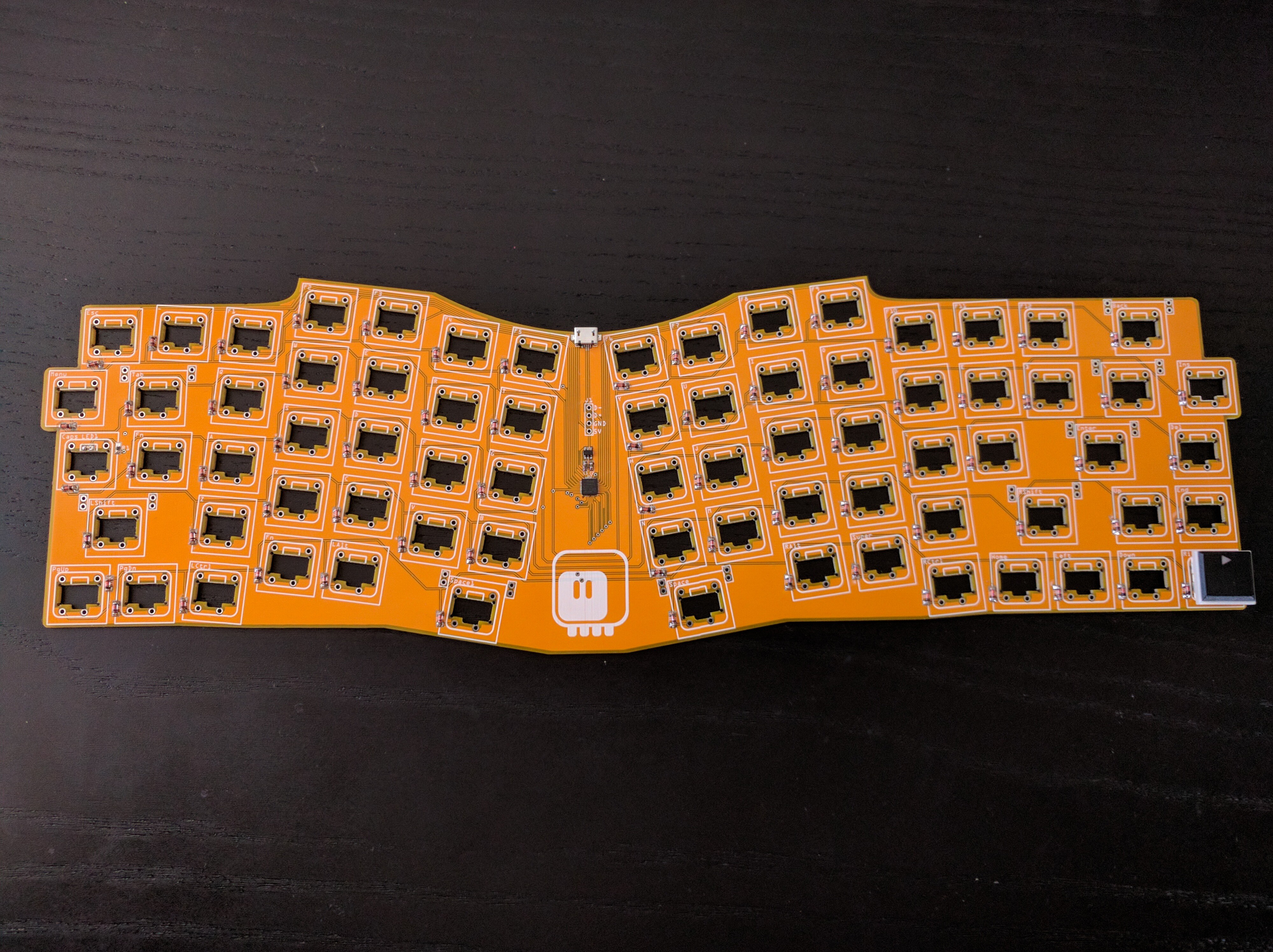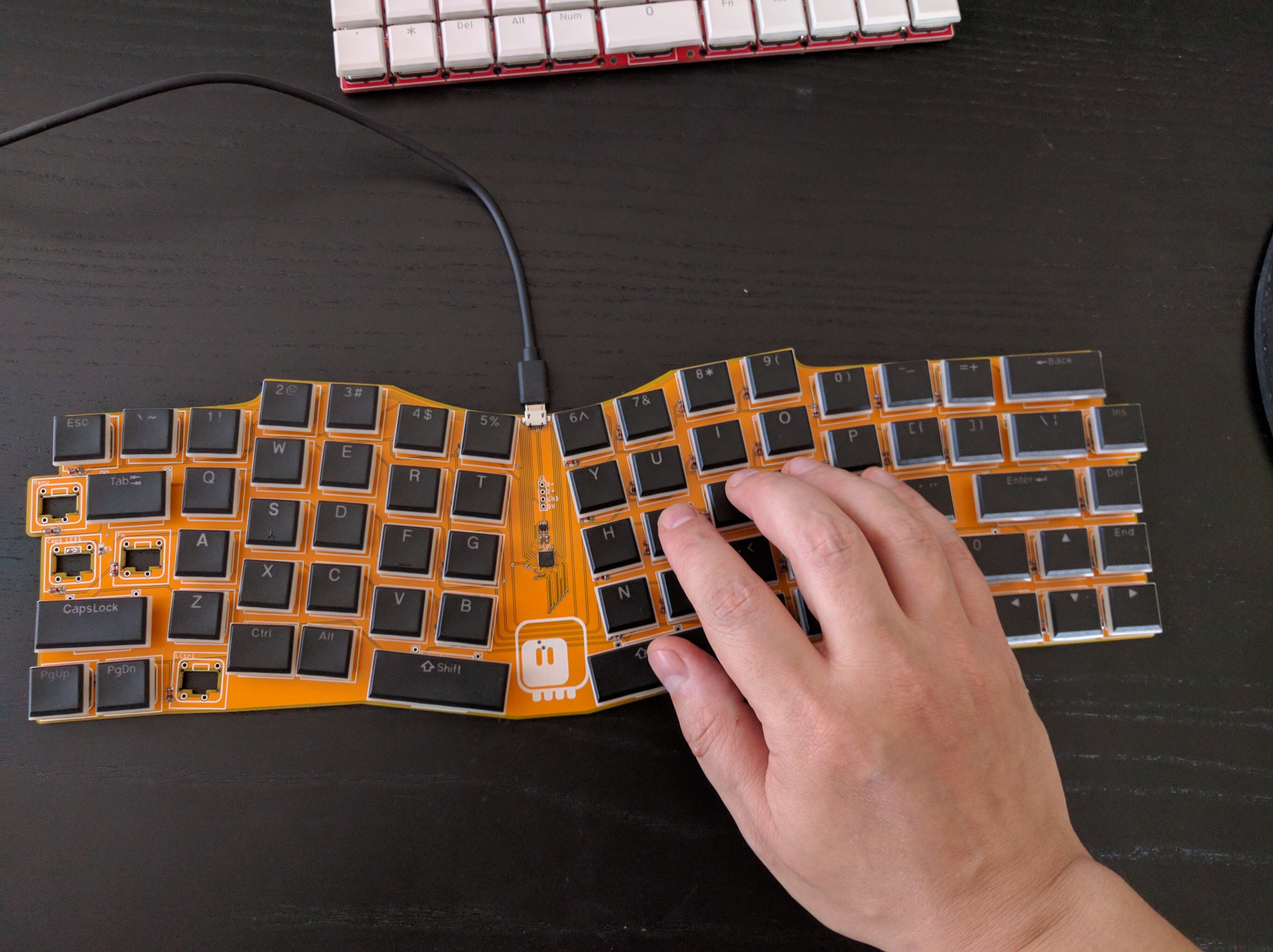A week has passed, and it's time to see the fruits of my design work and assemble the prototype.

I started with the electronics, so that it will be easier to bodge anything with switches not mounted. It's not complex, so there isn't much work required. This time I re-used a chip with a bootloader already flashed, so I didn't even need to muck about with connecting a programmer (the programming pins are connected to some of the switches, so it's not ideal). I spent an hour or so debugging a faulty USB connector, but finally got it sorted out and it seems the whole board works as supposed.
When I soldered the diodes, I put them in the opposite direction than intended, but they are consistent, so I can fix that in software, no problem. Just scan rows first instead of columns.
Then I soldered the switches with the key caps, and for the first time I could actually try this layout:

It took me a short while to adapt the code I have used for the previous keyboards, because I had to fill in the pins for rows and columns, and account for the reversed diodes. I got it to work, but somehow it felt really unreliable. So I sat down and started debugging it, and in the process I figured out why those switches feel so bad, and why both Flounder and this keyboard are unusable. I will write about this in detail in the next log.
Other than the really bad switches, the layout is actually very nice. I would prefer to make the horizontal spacing a little bit tighter — right now in places it's a bit more than the traditional 0.75", because the columns are angled at different angles. If I were redoing it, I would bring them together a bit, so that sometimes the distance is bigger and sometimes smaller (and not always bigger like now), so the difference was smaller overall. But it's not a big deal.
I also assumed that the large shift keys are 2.75U like on normal keyboards, but of course those Kailh keycaps are 2.5U, so there is a little bit more gap for them, but it doesn't affect convenience.
I didn't make the stabilizers — at this point, with those switches, that's pointless. The keyboard is unusable anyways, and I only sunk more money into that project, instead of accepting that those switches are trash and moving on.
 deʃhipu
deʃhipu
Discussions
Become a Hackaday.io Member
Create an account to leave a comment. Already have an account? Log In.